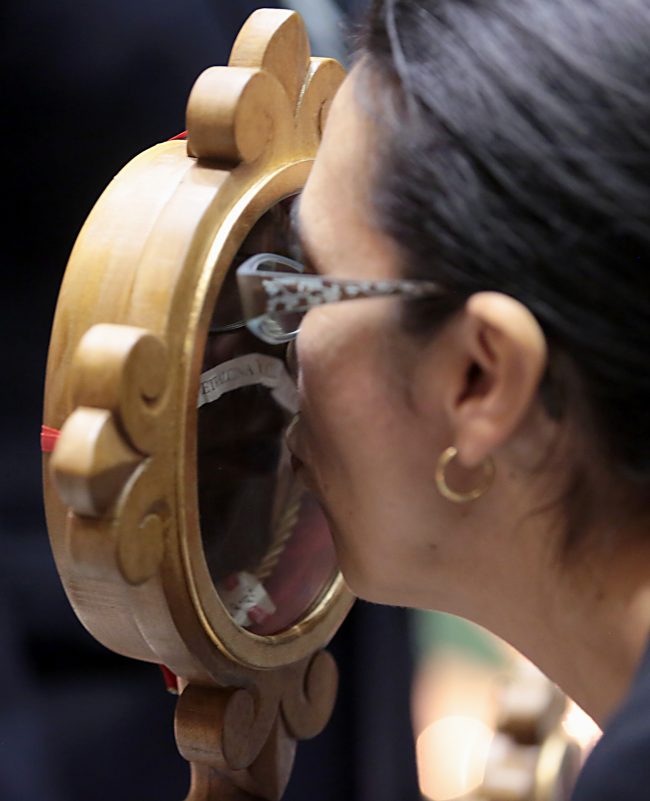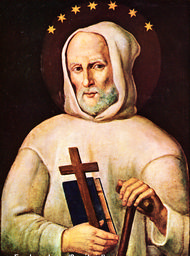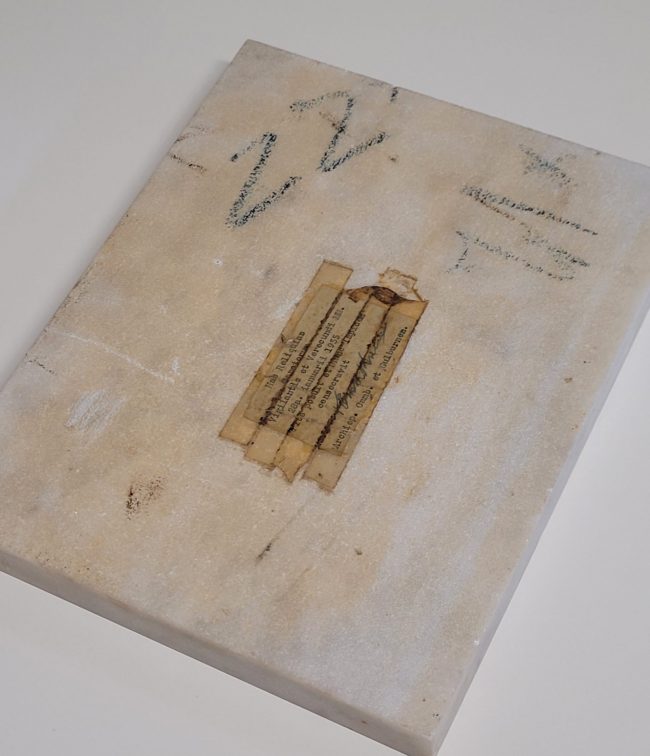A long way from home for St Bruno of Cologne

A parishioner kisses a relic of Saint Pio of Pietrelcine, O.F.M Cap, at Saint Peter in Chains Cathedral in Cincinnati Wednesday, Oct. 3, 2018. (CT Photo/E.L. Hubbard)
Who would have thought?
Certainly St Bruno of Cologne wouldn’t have!
The 11th century German saint was famous for his learning and holiness and as the founder of the Carthusian order.
But he would never have heard of Australia; would never have believed that a part of him may end up on our shores.
Yet there’s a good chance – yet to be confirmed – that St Bruno’s relics are embedded in one of the altars at St Christopher’s Cathedral, Manuka.
It’s a little-publicised fact that consecrated Catholic Church altars contain a saint’s relics and this includes in the many consecrated altars (not all are consecrated) throughout the Canberra/Goulburn archdiocese.
There’s a long history behind the practice that goes back to the earliest years of the church. Originally the Eucharist is likely to have been celebrated on wood tables in the homes of the first Christians.

St Bruno of Cologne
Later, during the persecutions especially, it was celebrated atop the stone tomb of martyrs. It then became common to enclose the relics in the altars themselves.
Today, the practice remains much the same. The relics are enclosed in a square marble block and placed into a cavity on the top face of the altar.
A quick look into the archdiocese’s archives reveals that it holds in storage the relics of many saints, including those of St Ignatius Loyola, St Francis of Assisi, St Vincent de Paul, and Australia’s own saint St Mary of the Cross MacKillop.
 However, just what other relics are held in the archdiocese’s altars is not readily available and the records, especially the older ones, may not be easy to find – hence the doubt about St Bruno.
However, just what other relics are held in the archdiocese’s altars is not readily available and the records, especially the older ones, may not be easy to find – hence the doubt about St Bruno.
Another problem is that while the relic will have an identification label it is likely to be in Latin, difficult to read, and may form part of the slab that is cemented into the altar cavity.
In a very real and literal way the saints are present with us in body not only in spirit when we celebrate in communion with them the liturgy of the Mass.
And in the case of St Bruno, that is a long way from home.
The Catholic Voice would welcome any feedback on the location and identification of saint’s relics held throughout the archdiocese.


